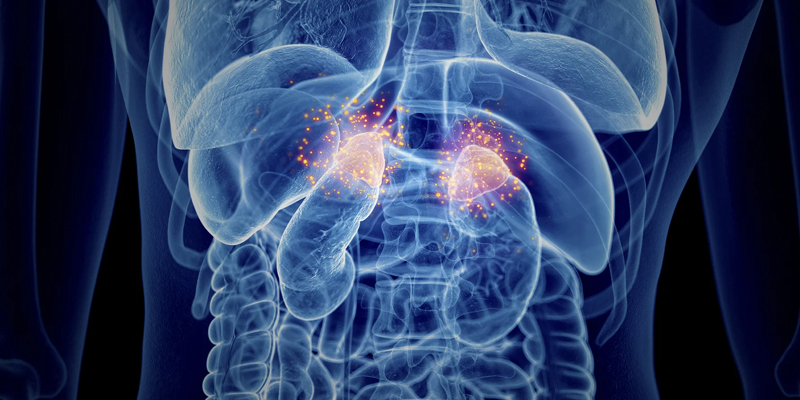Adrenal & Pituitary Disorders
Adrenal and pituitary disorders involve dysfunction of the adrenal glands and pituitary gland, respectively, which are part of the endocrine system responsible for producing and regulating hormones that control various bodily functions.
-
Adrenal Disorders:
- Adrenal Insufficiency (Addison's Disease): This occurs when the adrenal glands don't produce enough cortisol and, in some cases, aldosterone. Symptoms may include fatigue, weakness, weight loss, low blood pressure, darkening of the skin, and salt cravings. Causes include autoimmune conditions, infections, or damage to the adrenal glands.
- Cushing's Syndrome: This condition results from prolonged exposure to high levels of cortisol. Symptoms may include weight gain (especially in the upper body and face), thinning of the skin, easy bruising, muscle weakness, fatigue, high blood pressure, and irregular menstrual periods. Causes may include long-term use of corticosteroid medications, adrenal tumors, or pituitary tumors that produce excessive ACTH (adrenocorticotropic hormone).
- Adrenal Tumors: Adrenal tumors can be benign or malignant and may produce hormones in excess, leading to various symptoms depending on the type of hormone overproduction.
-
Pituitary Disorders:
- Pituitary Adenomas: These are non-cancerous tumors that develop in the pituitary gland. Depending on their size and hormone secretion, they can cause various hormonal imbalances and symptoms. Examples include:
- Prolactinomas: Tumors that produce excess prolactin, leading to symptoms such as irregular menstrual periods, infertility, and breast milk production in non-pregnant individuals.
- Acromegaly: A condition characterized by excessive growth hormone production, resulting in enlargement of bones and tissues, joint pain, thickened skin, and other complications.
- Cushing's Disease: Caused by a pituitary tumor that produces excess ACTH, leading to overstimulation of the adrenal glands and cortisol overproduction.
- Hypopituitarism: This refers to underactivity of the pituitary gland, resulting in reduced production of one or more pituitary hormones. Symptoms may vary depending on which hormones are deficient and can include fatigue, weight loss or gain, low blood pressure, infertility, and changes in menstruation.
- Diabetes Insipidus: This condition involves insufficient production or release of antidiuretic hormone (ADH), leading to excessive urination and thirst.
Diagnosis of adrenal and pituitary disorders typically involves a combination of blood tests to measure hormone levels, imaging studies (such as MRI or CT scans) to visualize the glands and detect abnormalities, and sometimes stimulation tests to assess hormone function.
Treatment options for these disorders vary depending on the underlying cause and may include medication to replace deficient hormones, surgery to remove tumors, radiation therapy, and other interventions to manage symptoms and complications. Close monitoring and ongoing care are often necessary to optimize hormone levels and maintain overall health.
